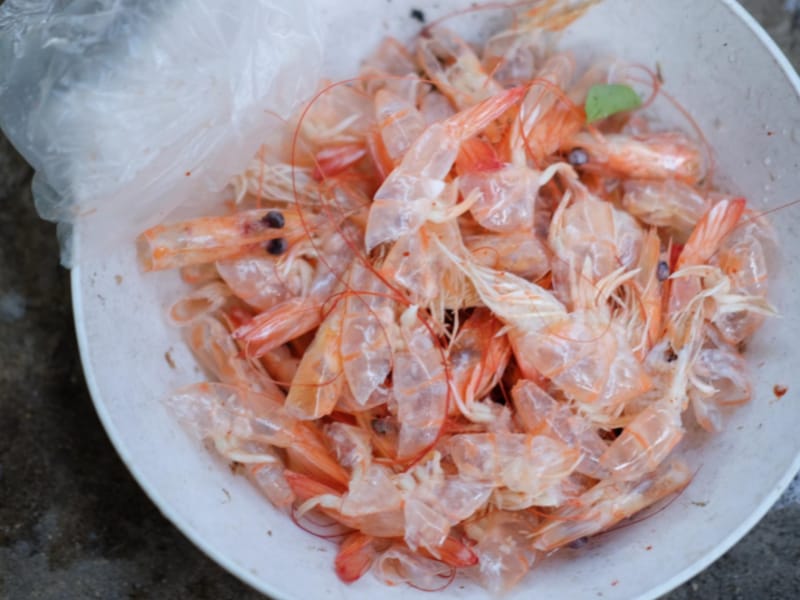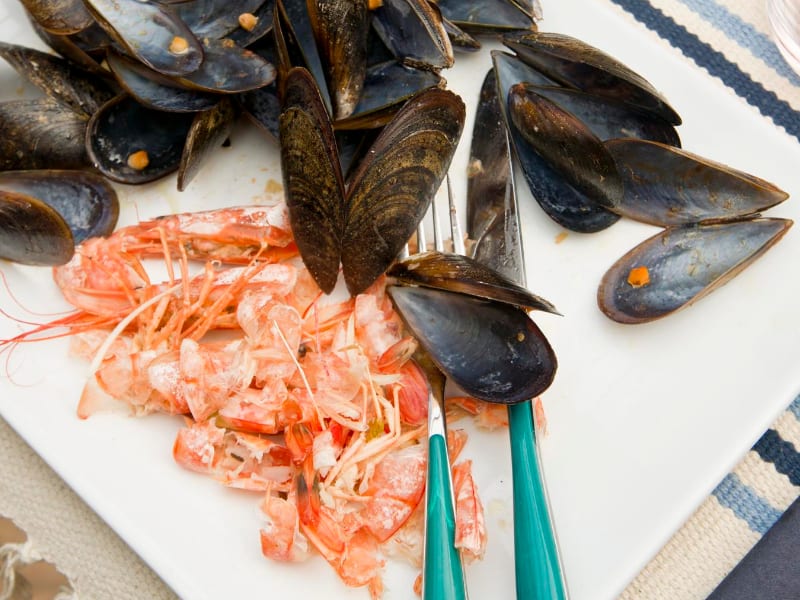You just had a great steamed shrimp dinner and now there are many shrimp shells lying around. What do you do with them?
It turns out you can compost shrimp shells! In fact, it’s pretty easy. And it’s not only great for your compost, but also for your plants.
This article will cover how to compost shrimp shells, the preparation needed, and the benefits they give your compost pile and garden. This will help the environment overall.
Read on to find out more about using this waste product as a compostable ingredient for your garden and your plate!

Can You Compost Shrimp Shells?
If you love shrimp, then you will know how much waste you have in the form of shells and tails. I have good news for you: shrimp shells are 100% biodegradable and can be composted, cooked or raw.
Shrimp shells contain beneficial nutrients for your garden. The beneficial microorganisms in your compost will love them, enabling them to grow and break down even more.
With a little preparation, shrimp shells can be composted in a traditional outdoor compost pile with other kitchen scraps. Or straight into a sealed system like the Bokashi, electric composter, the Compot, or a hot composter.
Are Shrimp Shells Good For the Garden?
Shrimp shells are great for your garden, and they offer many benefits and uses for your compost. In your compost, the compounds they contain will feed fungi and bacteria. That will help to break down organic materials and turn them into compost.
Shrimp shells can also be used directly in the soil. If you have nematodes damaging your potato plants, the compounds in shrimp shells can destroy the hatching eggs.
Shrimp shells are made up of Chitosan, which is a type of Chitin. Chitin can activate a plant’s natural defense mechanism and hamper fungus growth. A Canadian research team concluded that compost containing chitin-digesting bacteria helped to protect potato crops against a number of fungal diseases.
Shrimp shells also contain a lot of calcium carbonate, which is beneficial for plant growth. Calcium can promote root growth and plant development, ensuring your plants are healthy and able to resist disease and pests.
Calcium is also essential for the cell walls of plants, helping them stay strong and hold together. It activates select enzymes and sends signals to coordinate cellular activity.
Are Shrimp Shells and Tails Edible?
You don’t need to be too quick to toss your shrimp shells away, because they are surprisingly, completely edible. Shrimp tails can also be eaten and are pretty good for you. Shrimp tails can be deep-fried, used in stock, or just left on when cooking and eaten.
Coated in corn starch and deep-fried, you can cook and eat your shrimp with the shells still on to give them added crunch or try this shell-on shrimp recipe. Just make sure to remove the antennae from the head and the “vein” from the back.
Alternatively, you can use leftover shrimp shells to make stock.
When preparing shellfish, bear in mind that some people can be allergic to the shells of seafood, even if they have no reaction to the seafood itself.
Can You Add Shrimp Shells to a Vermicompost?
Yes! You can absolutely add shrimp shells to your worm compost bin with a few caveats. Before adding them to your worm bin, you should wash, dry, and grind the shells.
The reasoning behind this is twofold. First, they will stop the shells from becoming too smelly in your worm bin, and the second is due to their use.
The worms won’t necessarily use the shrimp shells for food, but they do need grit in their diet. Worms need grit because they have no teeth, so grit in their diet helps their digestion process.
Crushed dry eggshells are usually used for this purpose, but ground-up shrimp shells work just as well.

Preparing Shrimp Shells to Compost
This organic waste can easily be prepared for the composting process by following these steps:
- Collect the shrimp shells. As they do take some preparation to compost, it’s good if you can do one load at a time.
- Wash the shrimp shells. This step is to remove any leftover bit of meat, fat, or sauce that might be on the shells. Any residue on the shells will cause a foul odor and attract pests to your compost pile. The best way to clean them is by simmering them in boiling water for around 25 minutes and then drying them in the oven.
- Put the shrimp shells in the middle of your compost. Burying the shells will ensure that they break down as quickly as possible. Cover the shells with at least 10 inches of compost on top of them.
- Turn your compost. Regularly mixing your compost will ensure the heap is aerated and decomposes properly.
- Shrimp shells can be ground down before adding them to compost, or you can sprinkle them around your plants. You can grind the clean, dry shells in a coffee grinder, pestle and mortar, or place them in a bag and roll a rolling pin over them a few times. I have put this step last, as it is optional, but they will break down a lot quicker if you have ground them up first.
Shrimp shells are also a rich source of nitrogen, so you’ll also need to include carbon-rich compost ingredients to balance the brown-green ratio of organic material.
Compost Shrimp Shells Final Thoughts
Shrimp shells are an excellent addition to your compost pile. They provide both nitrogen and phosphorus, which are needed for healthy plant growth. If you don’t want to add them directly to your compost pile, you could always spread them around your garden beds.
The US is the second-largest consumer of shrimps in the world. In America, shrimps are one of the most popular kinds of seafood, holding 25%-30% of the country’s seafood market.
That’s a lot of organic waste that would otherwise be thrown away. Adding them to organic compost is a great way to help the environment.
For more articles on other compost material, check out these articles:

